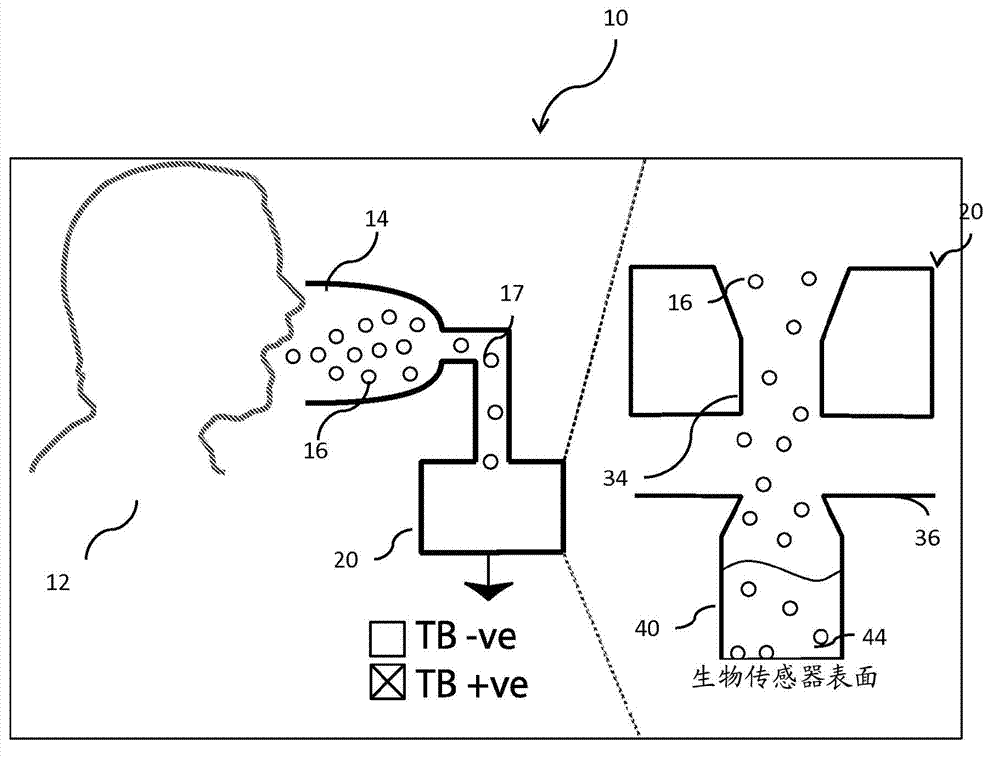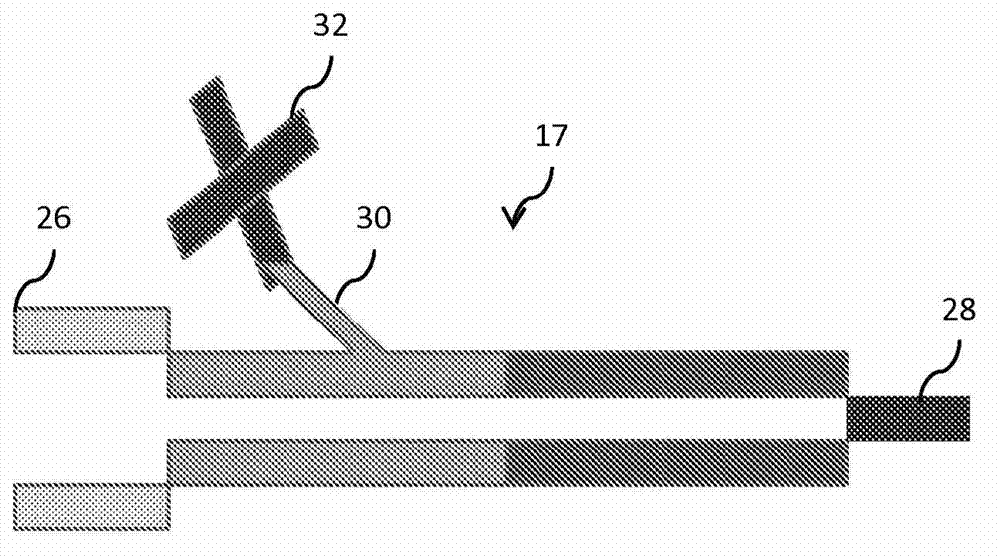System for airborne bacterial sample collection and analysis
一种样品、收集器的技术,应用在颗粒的系统领域,能够解决没有满足提供等问题
- Summary
- Abstract
- Description
- Claims
- Application Information
AI Technical Summary
Problems solved by technology
Method used
Image
Examples
Embodiment 1
[0078] Example 1: Comparison of Performance with Traditional Systems - Sampling of the Environment
[0079] Turning to a comparison of the operation of the present invention with that of conventional aerosol collection and analysis systems, it should first be understood that access to the interior components (IC) of cells, primarily DNA, is essential for most detection methods. (See eg N. Bao and C. Lu., Principles of Bacterial Detection: Biosensors, Recognition Receptors and Microsystems, pages 817-831. Springer, (2008), the disclosure of which is hereby incorporated by reference). In traditional biosensor systems, such as Figure 2a As shown in the block diagram, the bacterial aerosol is first collected in the first part (46), and then cracked in the second part (48) by a mechanical system, a heating system, a chemical system, an electrical system or a laser system. The cleavage product is then purified in the next section (not shown) to deliver the target molecule to a s...
Embodiment 2
[0097] Example 2: Study of cell rupture
[0098] Studies were carried out using the experimental apparatus described in Example 1 to show that airborne bacteria subjected to aerodynamic shock rupture by undergoing relative deceleration due to sudden changes in gas velocity. When χ=P 1 / P 0 1 is the pressure downstream of the nozzle, P 0 is the pressure upstream of the nozzle), an aerodynamic impact is generated by operating the impactor nozzle at sonic speed. Uncontrolled instability in the form of waves on the surface of the bacteria perpendicular to the direction of acceleration leads to the rupture of the bacterial cells. The critical acceleration ac is given by the following equation:
[0099] a c = 4 π 2 σ ρ p d p 2 ...
Embodiment 3
[0104] Example 3: Method for Measuring DNA Collection Efficiency
[0105] The experimental equipment provided by embodiment 1 can also be used to measure the collection efficiency (η d ). In such an experiment, a suspension of bacteria may be aerosolized using a capillary nebulizer (TR-30-A1, product of Meinhard Glass) at a nitrogen flow rate of 0.2 mL / min. Suspension concentration and flow rate will be controlled to produce single bacterial cells in the aerosol.
[0106] E. coli will be used as the test aerosol because (1) E. coli does not require a biosafety room and (2) E. coli is easy to grow and clean. Furthermore, S. pneumoniae is a plant-growing bacterium and is expected to have similar ac and thus f-values as E. coli vs. B. atrophaeus spores. ds-DNA (double stranded) in our samples will be stained with PicoGreen fluorescent dye (P11495, Life Technologies) using procedures provided by the manufacturer and in other work. (See W. Martens-Habbena and H. Sass cited ...
PUM
 Login to View More
Login to View More Abstract
Description
Claims
Application Information
 Login to View More
Login to View More - R&D
- Intellectual Property
- Life Sciences
- Materials
- Tech Scout
- Unparalleled Data Quality
- Higher Quality Content
- 60% Fewer Hallucinations
Browse by: Latest US Patents, China's latest patents, Technical Efficacy Thesaurus, Application Domain, Technology Topic, Popular Technical Reports.
© 2025 PatSnap. All rights reserved.Legal|Privacy policy|Modern Slavery Act Transparency Statement|Sitemap|About US| Contact US: help@patsnap.com



